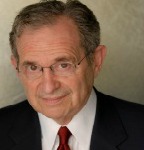Counting Ourselves As Israel

Sefer Bemidbar, the book of Numbers, which we begin reading this week, opens with the taking of a census. After the rather arcane matters we have been reading about in recent weeks—the sacrificial cult, laws of purity and impurity, skin eruptions, bodily discharges, and so on—the monotony and repetitiveness of this week’s parashah comes almost as a relief.
The chieftains of each tribe are named, and an identical formula is recited, concluding with the number of men over the age of twenty—fighting men—in each tribe. For this is not a census of the entire people, rather it is an accounting of those who will make up an army to cross the desert. The Israelites have just celebrated the first anniversary of their liberation, and they are about to embark on a journey that will last thirty-eight years, although they do not know that at the time of the census. They are forming an army to take the population on what should be a short sojourn to the Promised Land. That they should form an army to cross the desert is not surprising; but, we may ask, why the apparent preoccupation with numbers?
The Bible’s preoccupation with numbers parallels our own. Numbers lend specificity and veracity to narrative. Whether it is the number of lives lost in a tsunami or homes lost in a wildfire or the number of career home runs for a baseball player, numbers are concrete. They give the reader a means of taking hold of the story. Abraham was promised that his descendants would be as numerous as the stars in the sky and the sands of the sea, and yet here are Abraham’s descendants and we are told precisely how many there are, at least how many fighting men.
Furthermore, large numbers have a way of lending gravity and importance to what is being described. Quantitative descriptions provoke an emotional response that qualitative descriptions often do not. We have a tendency to make judgments based on numbers and not make the effort to look beyond the raw data in our evaluations. In an interview some years ago, a well-known Orthodox rabbi was quoted as predicting the demise of both the Conservative and Reform movements, based on an uncritical assessment of census data. He has rightly been much criticized for his statement, because although numbers may excite us or frighten us or bore us, they can make a story interesting on a superficial level; but by themselves, they do not lead to a deep understanding of either a text or of life.
So let us take a deeper look at the numbers in Numbers 1–4. At the time of the Exodus, we read that there were approximately 600,000 men, not including children (Exod. 12:37). And now, after a year in the desert, after the killing of some 3000 associated with the golden calf episode, as well as the death of even more in the plague that followed, the Israelites now number 603,550 men of fighting age, plus 22,000 Levite males over the age of one month. Although modern Bible scholars have pointed out that this number cannot be understood literally, their specificity is intriguing.
The census occurs on several levels of particularity. The heads of the tribes are mentioned individually by name, and each paragraph concludes with the number of men in each tribe. Within these paragraphs, we are told that the counting was done according to clans and ancestral houses and that those in the census were counted by name (bemispar shemot), though we are not given here the names of the ancestral houses or of the individuals. Finally, we are told the grand total of fighting men among the Israelites. The census of the Levites, carried out separately from the general census, proceeds in similar manner, citing the names of the heads of the clans and the numbers in each clan, before enumerating the total number of Levites over the age of one month.
What we have here is a juxtaposition of the individual and the collective. There is a total number of Israelites, but it is made up of individuals with names, relationships, and histories. The Slonimer Rebbe (Netivot Shalom), in his commentary on Numbers, notes that the number of the Israelites—603,550—is equal to the number of words in the Torah. Just as the Torah is a unity made up of individual words, the People of Israel is a unity made up of individuals. Remove even a word and the Torah is incomplete. Remove even one person, Israel cannot receive the Torah. This, he suggests, is why in most years, as in this year, Parashat Bemidbar is read on the Shabbat immediately preceding Shavuot. This census is meant to remind us that the act of kabbalat haTorah (receiving the Torah) is an individual one, performed collectively in community; or stated conversely, a collective act performed by individuals. The fulfillment of the Torah, the Slonimer tells us, can only be accomplished when Kelal Yisra’el (the whole community of the people Israel) acts in unity.
So the use of numbers in ways that are meant to divide us, to emphasize differences rather than similarities, and to create disunity and dissension, is not only a misuse and misrepresentation, but is a violation of the collective effort needed to bring light to the world. When we stand at Sinai to receive the Torah on Shavuot, we need to remember that while we do so as individuals, the act can only have true meaning when we do so as part of a collective, as part of Kelal Yisra’el.
A version of this commentary was originally published in 5769.
The publication and distribution of the JTS Parashah Commentary are made possible by a generous grant from Rita Dee (z”l) and Harold Hassenfeld (z”l).



